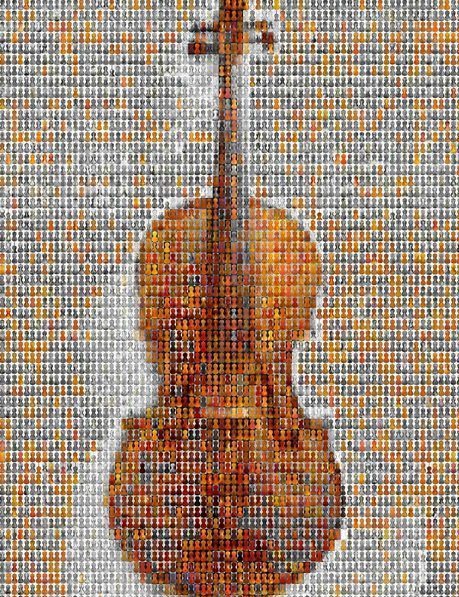[dropcap style=”font-size:100px; color:#992211;”]C[/dropcap]opyright that.
‘A body like a Stradivarius’… be gentle with those f-holes.
Four families likely influenced violin shape over four centuries, with many imitating famous designs like Stradivarius, according to a study published October 8, 2014 in the open-access journal PLOS ONE by Daniel Chitwood from Donald Danforth Plant Science Center in Missouri.
The first violins appeared in 16th century Italy and since then, their designers have continued to incorporate numerous innovations to improve the acoustical properties and playability of violins. However, details of the body outline can vary without significantly compromising sound quality and may instead reflect other factors, like history. To better characterize the history of the violin, how its shape has changed over time, and how its shape compares among different violin makers, the author of this study analyzed the evolution of the violin shape by family, sampling the body shapes from photographs of over 9,000 instruments over 400 years of history.
Specific shape features, produced by different violin makers, strongly correlate with historical time. Specifically, violin shapes originating from multi-generational luthier families tend to cluster together, and familial origin is a significant explanatory factor of violin shape. The four major clusters include Maggini, Stradivari, Amati, and Stainer. The clustering suggests that luthiers likely copied the outlines of their instruments from others, which historical accounts corroborate. Together, the analysis of four centuries of violin shapes demonstrates not only the influence of history and time leading up to the design of the modern violin, but widespread imitation and the transmission of design by human relatedness.
Daniel Chitwood added, “Shape is information that tells us a story and can inform us about the historical forces shaping our lives and creativity. In the case of violins, their architecture was influenced by consumer preference and resulted in mimicry between violin makers, as well as by genetic lineages and human relatedness, through which information, in the form of shape, passed from one generation to the next.”
Source: http://dx.plos.org/10.1371/journal.pone.0109229
Image: Dan Chitwood

Some of the news that we find inspiring, diverting, wrong or so very right.



















